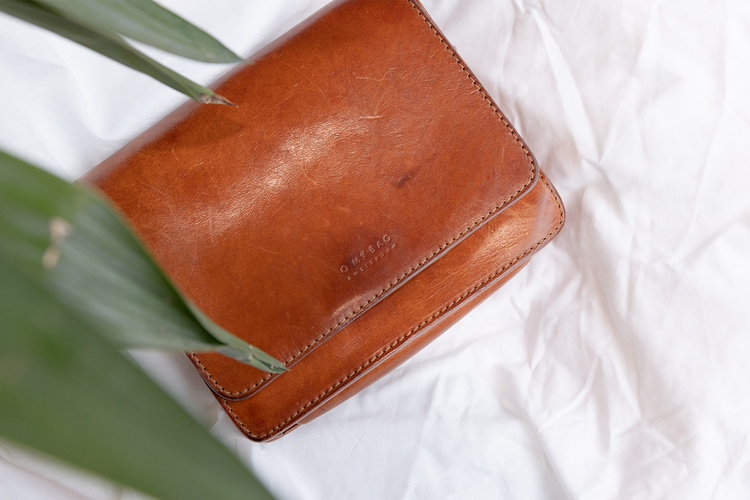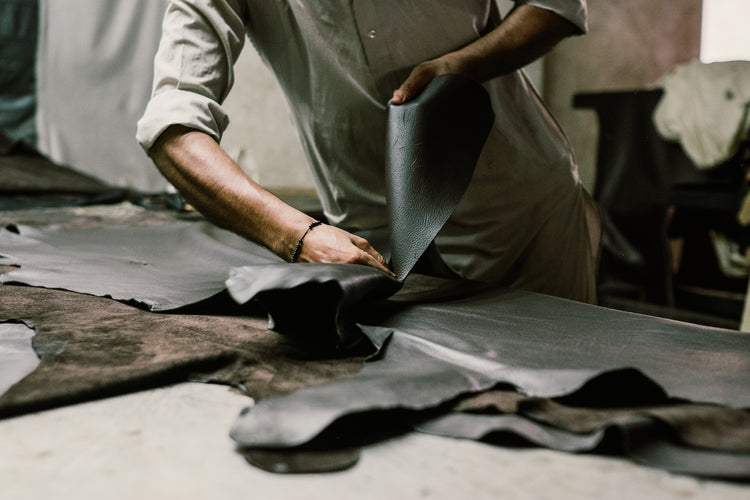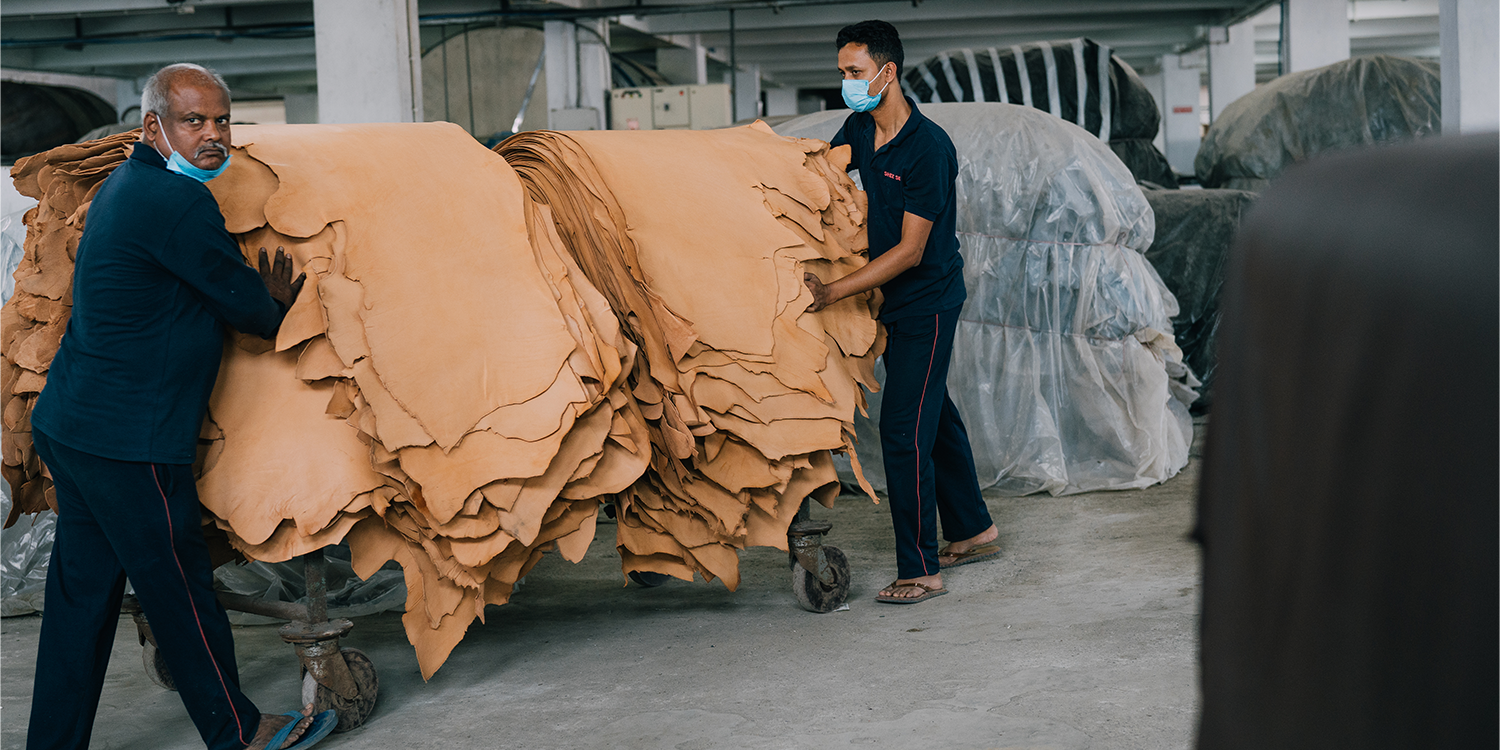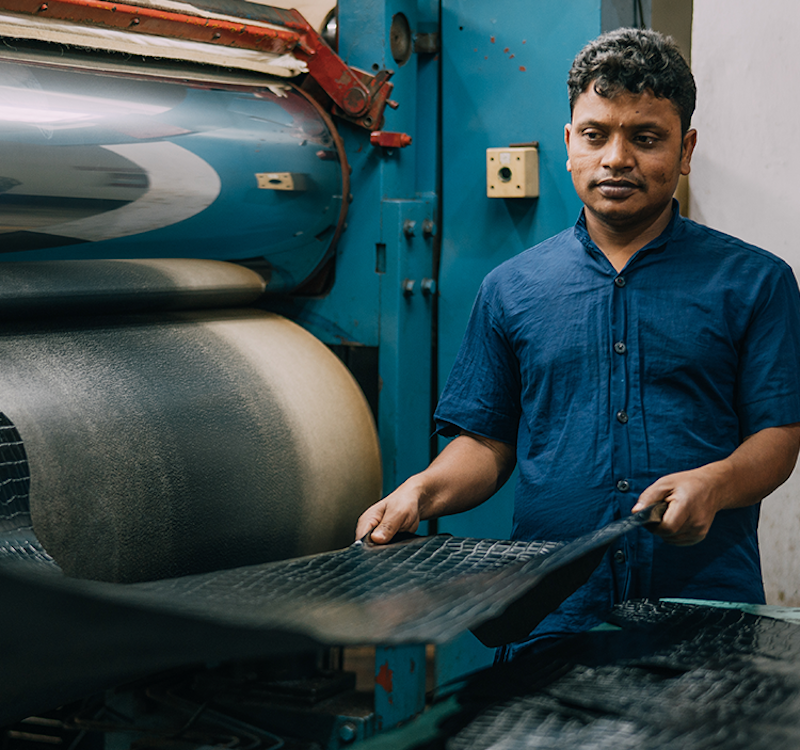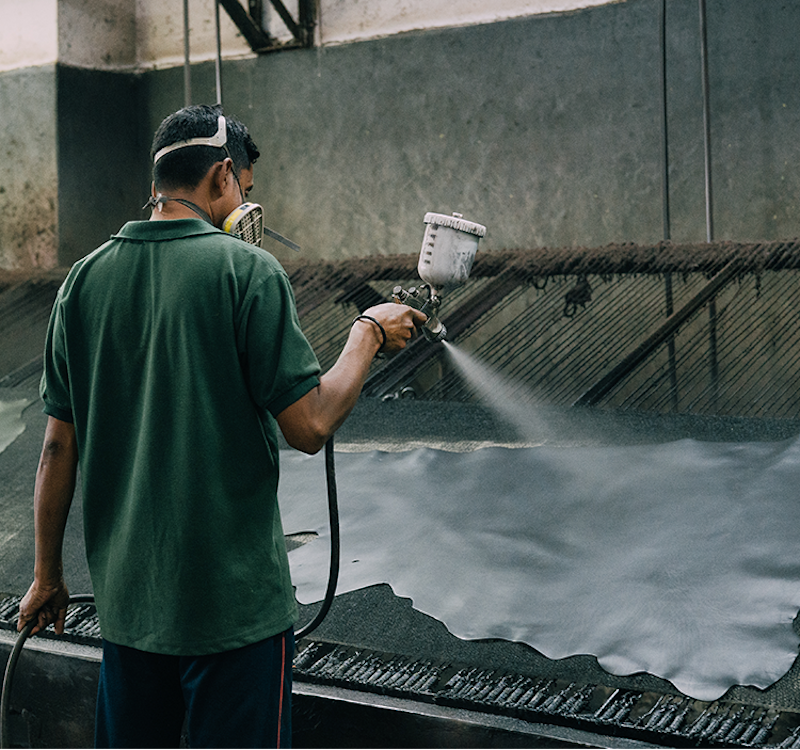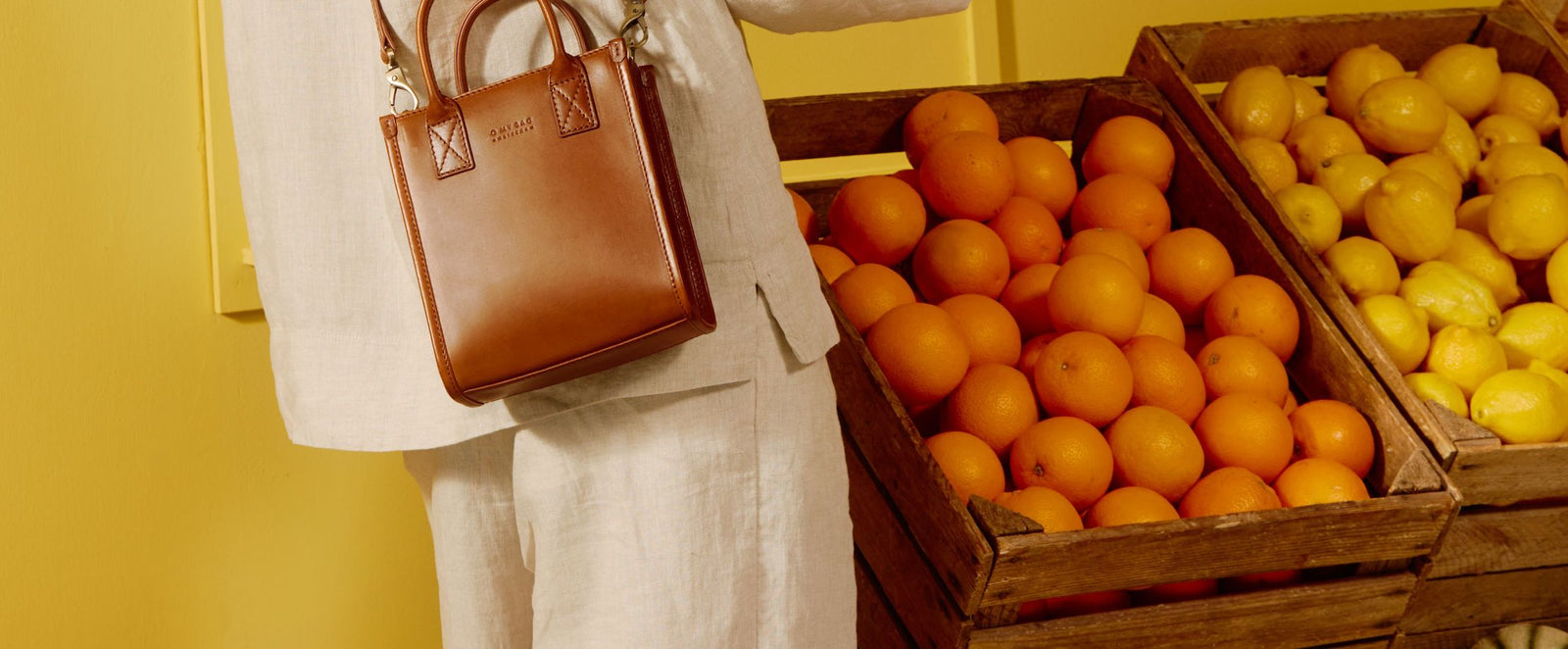Wet White Tanning
Our tanneries use a process called Wet White Tanning for all their eco-leathers. This method of tanning is safe and more environmentally friendly. The process is free of harmful chemicals and heavy metals, like chromium and formaldehyde. To verify this, the leather is tested by SGS, an independent inspection agency.
The name of this tanning process derives from the fact that, after the process, hides look white instead of blue like the chrome-hides do. The tanning liquor used for eco-leathers is comprised of a combination of tanning agents and natural vegetable extracts. The steps in the tanning process are described below, and can take up to 8 weeks!
